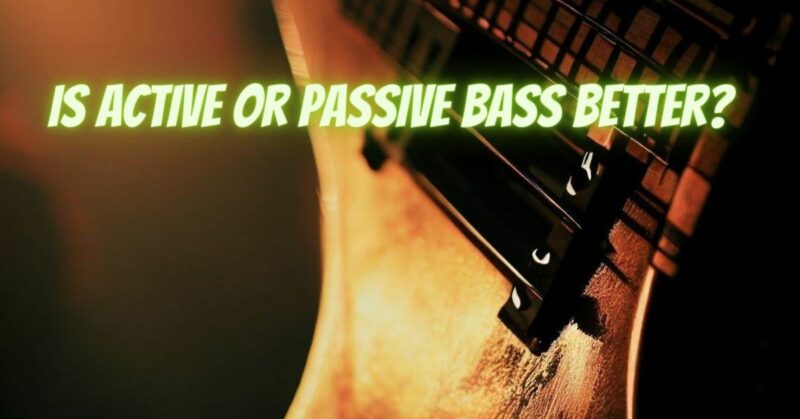The debate between active and passive bass guitars has long been a topic of discussion among bassists. Both types of electronics offer distinct tonal characteristics and advantages, catering to different playing styles and musical genres. In this article, we’ll delve into the intricacies of active and passive bass guitars, examining their unique qualities to help you determine which option aligns best with your musical aspirations.
1. Active Bass Guitars: Unveiling the Advantages
- Tonal Versatility: Active bass guitars are renowned for their extensive tone-shaping capabilities. Built-in preamps allow precise control over bass, midrange, and treble frequencies, enabling players to sculpt a wide range of tones suitable for various genres.
- Boosted Signal: Active electronics provide a signal boost, resulting in higher output levels. This can be advantageous for maintaining clarity in long cable runs and effectively driving amplifiers or effects pedals.
- Extended Headroom: Active bass guitars offer higher headroom, allowing for cleaner and more transparent signal reproduction, even when playing dynamically or employing aggressive techniques.
- Defined and Focused Tone: Active electronics minimize interference and noise, resulting in a focused and defined tone. This characteristic is particularly beneficial for modern genres where clarity and precision are essential.
2. Passive Bass Guitars: Embracing the Classic Approach
- Natural Sound: Passive bass guitars offer a more organic and natural sound. They capture the instrument’s inherent tone without additional coloration, making them suitable for genres that value vintage and classic tones.
- Simplicity: Passive bass guitars are straightforward in their design, offering a simpler signal path. This can lead to a purer signal with less electronic interference, contributing to a traditional and warm tone.
- Dynamic Expression: The absence of active preamps allows passive basses to respond more dynamically to your playing technique. This dynamic sensitivity can enhance your expressiveness and musicality.
- Battery-Free Operation: Passive bass guitars do not require batteries, eliminating the need for battery replacement and ensuring consistent performance without concerns about power supply.
3. The Decision: Active vs. Passive
- Musical Genre: Consider the genre you predominantly play. If you lean towards modern styles like rock, metal, or fusion, active bass guitars can offer the versatility and focused tones you need. For genres like blues, jazz, or classic rock, passive basses might suit your tonal preferences.
- Tonal Vision: Determine the sonic palette you wish to explore. Active bass guitars provide extensive tone sculpting, whereas passive basses embrace a more traditional and organic sound.
- Performance Style: Reflect on your playing style. If you frequently require dynamic tonal shifts within a performance, active basses might be more suitable. If you prefer consistent tonal characteristics, passive basses could be your choice.
The decision between active and passive bass guitars ultimately hinges on your tonal preferences, musical genre, and playing style. Both options offer unique advantages that can elevate your playing experience and shape your sonic identity. Whether you gravitate towards the versatility of active bass guitars or the timeless charm of passive basses, the choice is an opportunity to define your sound and connect more deeply with your instrument.


